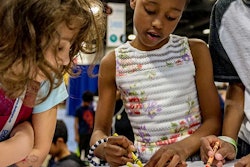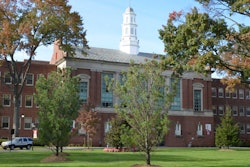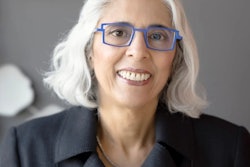There are more than two million people incarcerated in America, including 837,000 African-American men, according to data compiled by the Washington-based Children’s Defense Fund.
Marian Wright Edelman, president of the organization, says a 6-year-old Black boy today has a one in three chance of going to prison in his lifetime, while a Latino 6-year-old boy has a one in six chance. A growing number of young Black and Latino women are finding their way behind bars also.
Speaking at a townhall meeting hosted by the Congressional Black Caucus Foundation in September, Edelman said America has set forth priorities that have been disastrous for the country’s children. “The only universal child policy America will guarantee all of our children is a jail or detention cell after they get into trouble,” she said. “We’re spending three times more per prisoner than per public school pupil in all of our states. That’s the dumbest set of investment priorities I can think of, and we’re standing for it.”
Tens of thousands of children and teens are being sucked into what child welfare advocates call a cradle-to-prison pipeline, according to a report that was recently released by the Children’s Defense Fund. Recent events in Jena, La., brought this issue to the forefront as six Black teens were treated more harshly by the justice system than White teens who had perpetrated similar offenses at Jena High School.
Public policies that target drug offenses and other crimes more likely to be committed by minorities, as well as the country’s use of the prison system as a means to control young Black men is wreaking havoc on communities and families, the report showed and advocates say.
The system by which lawbreakers are apprehended and punished is one of the pillars of democracy, states the Washington-based Leadership Conference on Civil Rights. In order for that system to remain viable, the public must be confident that people in like circumstances are treated alike, consistent with the Constitution’s guarantee of equal treatment under the law, the LCCR contends.
America’s criminal justice system strays far from this ideal, says Julie Fernandes, a senior policy analyst and special counsel for the Leadership Conference. The core problem as it relates to the cradle-to-prison pipeline, she explains, is the use of the criminal justice system to address social problems.
The Jena case shines a spotlight on how race and class conspire to deny equality to Black and Latino people before the law, Fernandes adds.
Of particular concern, according to the Leadership Conference, is racial profiling by police who single out minorities; the disproportionate harsh treatment of minorities in the juvenile justice system; and a capital punishment system that provides one of the most glaring manifestations of racial disparity in the criminal justice system.
“This is bigger than Jena,” Fernandes says. “This is about our unwillingness to deal with social problems in any other way but through the criminal justice system.”
While child welfare and civil rights advocates point to public policies such as unfair law enforcement and sentencing guidelines, there is another equally important cause behind the prison pipeline crisis, says Dr. Orlando Patterson, the John Cowles Professor of Sociology at Harvard and author of The Ordeal of Integration: Progress and Resentment in America’s ‘Racial’ Crisis.
“The simple fact that young Black men commit a disproportionate number of crimes, especially violent crime, cannot be attributed to judicial bias, racism, or economic hardships,” Patterson wrote in the Sept. 30 edition of The New York Times.
“Those who view the prison pipeline as a result of White racism are living in the past as well as a state of denial,” Patterson continued. “Even after removing racial bias in our judicial and prison system – as we should and must do – disproportionate numbers of young Black men will continue to be incarcerated.”
The way to steer away from the pipeline, Patterson says, is to emphasize programs like Head Start, which focus on young children before they are influenced by the street culture. Patterson also suggests that when it comes to single-parent households, the United States should look to the Scandinavian countries, which provide a strong support system for single mothers and children.
“Scandinavia has a very high percentage of single mothers; they just don’t believe in marriage over there. But they don’t have the problems we have here,” Patterson says. “The Scandinavians provide highly trained, professional care for children while the mothers are at work, and it’s free, paid for by the government. They don’t have the prison rates that we have.”
–Tracie Powell
There are currently 0 comments on this story.
Click here to post a comment
© Copyright 2005 by DiverseEducation.com


















